PA Penitentiary

|
The Penitentiary 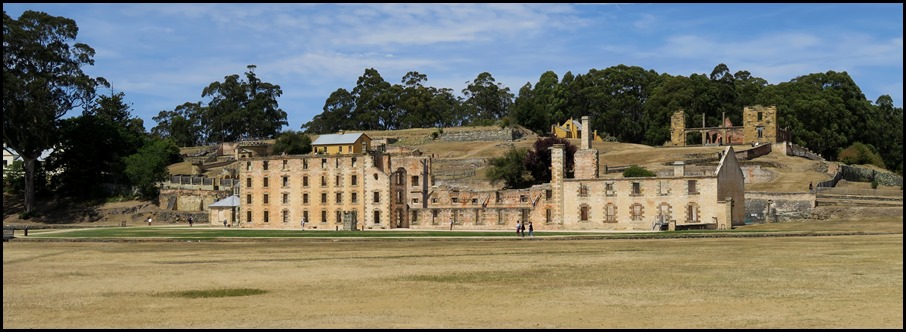 The Penetentiary
dominates Port Arthur.
 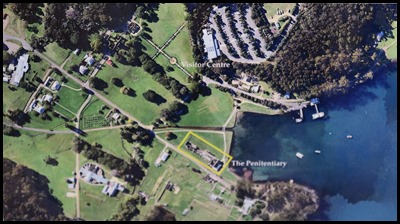 In fact, the
Penetentiary dominates the whole site.
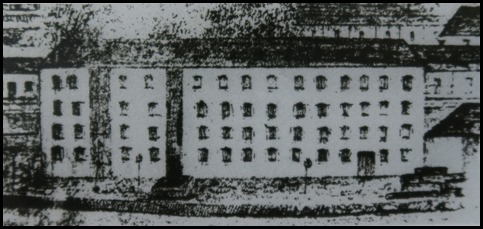 In 1839 the convicts at Port Arthur
consumed over half a tonne of flour per day. To cut costs, Commandant Booth
decided to build a flour mill. Booth believed that
enough water ran down Settlement Creek to power the proposed mill. In January
1843 the Hobart millwright and engineer, Alexander Clark, arrived to take charge
of this project. Under Clark’s direction, convict work gangs built a dam for a
reservoir upstream on Settlement Creek, about one and a half kilometres away.
From here water ran down a stoned-lined millrace to a second reservoir. Clark
calculated that the flow from this reservoir could drive an overshot waterwheel
ten and a half metres in diameter.
The engineering involved was ambitious and
complex. From here, water had to be directed underground, down the slope, under
a group of buildings and across the street to the mill. It was carried in a
brick-lined channel, a system of pipes and a trough over Champ Street. Apart
from the technical challenges, Clark was frustrated by an acute shortage of
labour. This was made worse when his workers were sent to other gangs as a
result of what Clark believed to be false charges laid by the convict
constables. It took him over two years to complete the project. Port Arthur’s
water-wheel was first used to grind flour in late 1845 – six years after it was
conceived.
 Some Port Arthur guards, 1866.
History: In 1857 the flour mill was converted into a
penitentiary, capable of housing over 480 convicts in dormitory accommodation
and separate apartments. Flanked by the
Watchmen’s Quarters, the Penitentiary also contained a mess room, library,
Catholic chapel, workshops and ablutions complex. The building was gutted by
fire in 1897 and lay derelict until a concerted conservation program began in
the 1960’s.
Present Day: Re-opened to the public in December 2014 after almost a year of closure, the Penitentiary has undergone a massive conservation effort in recent times. In 1872 English novelist Anthony Trollope claimed that no man desired to see the “strange ruins” of Port Arthur. Mmm, so many visitors every year would strongly disagree, including us.
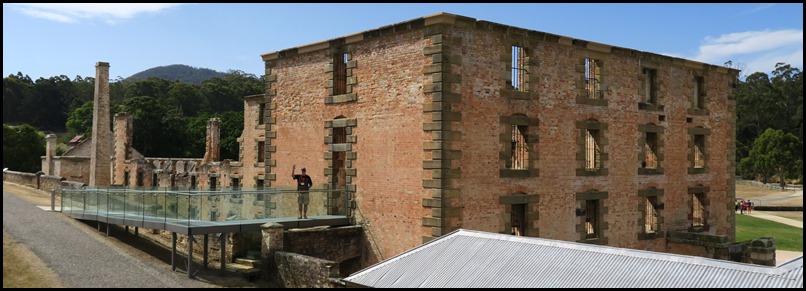
We entered the Penitentiary ruin from the back.
The government relied heavily on the convicts’ unpaid labour, firstly to establish the prison and then to continue its operations, including its many industries. Punishment and productivity combined when convicts were sentenced to hard labour. Up until 1850, newly arrived convicts were put to the hardest form of physical work in the carrying gangs. These unfortunate men carried logs, sawn timber, spars or shingles. Convicts who were well behaved would be assigned to lighter labour. Those who misbehaved would be punished with flogging, solitary confinement, heavy irons and after 1851, a spell in the Separate Prison. The men most dreaded being sent to work at the Coal Mines. In 1845 a treadmill was built in the flour mill with up to sixty convicts powering it. This treadmill turned the grindstones, and prisoners might be sentenced to work on it from dawn until dusk with two meal breaks. It was like climbing an endless flight of stairs on horizontal boards, like a hamster on his wheel, not in it, this could lead to exhaustion and serious injury.  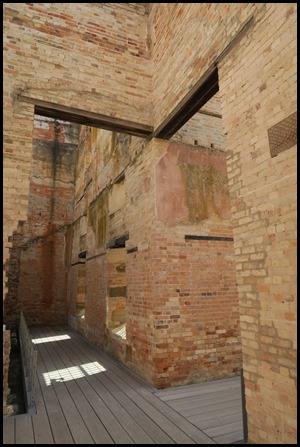  Leg irons were used as a form of punishment; they also restricted movement and made escape even more difficult. They varied in weight from about six kilograms to thirteen kilograms. The convicts wore them day and night and they could only be removed by being struck off with a chisel. Men who were wearing the irons had trousers buttoned down the outside leg to allow them to be removed and during the day their trouser legs so that the irons could be examined to make sure that they were firmly in place. The men were responsible for keeping the irons in good condition. The chains added to the difficulty of the work they performed and the constant chafing on their ankles often caused ulcers. Convicts were often sentenced to wear irons for a year or more.
Charles Tossante Brown was transported for seven years for the crimes of theft and embezzlement at the age of twenty two, he was sent to Port Arthur to work as a clerk in the Commissariat Store. Brown must have been on his best behaviour during this time, as after just one year he received his freedom. However, this was not to be the end of Brown’s criminal career. Further convictions for theft and embezzlement earned him a life sentence and he returned to Port Arthur in irons, dying here at the age of thirty five.
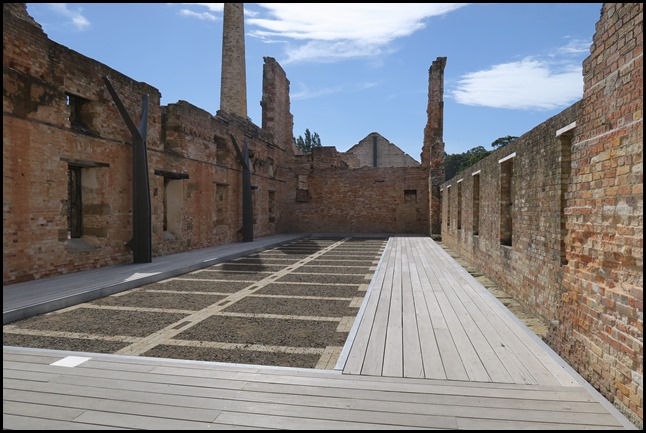
The Lash. In the first ten years offences against the settlement’s strict regulations (for example, absconding, illegally possessing tobacco or rum, hiding clothes or refusing to work) were punished by the lash. Flogging was commonly used not only on convicts but on soldiers and sailors. The prisoner would be tied to a wooden frame known as the triangle and in front of fellow prisoners he would be given the number of lashes prescribed for his offence (between 10 to 100) on his bare back. A rope whip made of nine knotted thongs attached to a handle, known as the cat-o-nine tails, was used to inflict the punishment. The convicts put on a display of defiance at the triangle. Commandant James Boyd wrote that ‘the more unflinchingly a prisoner endured flogging the more he was looked up to and applauded by the mass of his associates’ (Brand, 1978, p.13). The man responsible for inflicting the flogging was known as the flagellator. He was selected from among the convicts and was the most despised man in the settlement. The Medical Officer always attended the floggings and was responsible for putting a stop to it if the convict’s life was endangered and also reviving a collapsed convict to continue his punishment. In the 1840’s flogging was not used very often; with the introduction of the Separate Prison in 1849 flogging was abandoned altogether, although it continued in the armed forces for many more decades.
Henry Laing, convict, was a skilled ‘surveyor of works’ and is remembered for the many coloured plans he drew of Port Arthur’s buildings, including the Penitentiary and the Master Shipwright’s House. During his time at Port Arthur, Laing caught the attention of the Governor’s wife, Lady Jane Franklin, who described Laing as “.... a very handsome man..... who has the disease of picking and stealing and seems to labour under (an) absolute inability to do otherwise”.
  When
Superintendent George Courtenay succeeded W.T.N. Champ in 1848 the mill was not
operating successfully and he suggested it be converted to a penitentiary. At the time the flour
mill was converted into the Penitentiary, the original wooden prisoners’
barracks were very dilapidated and in need of replacement.
Although Commandant Booth’s proposal for the conversion was approved, it was not
until 1854 under Commandant James Boyd, that work began. In the autumn of 1857
it finally housed prisoners, eventually housing over six hundred
convicts.
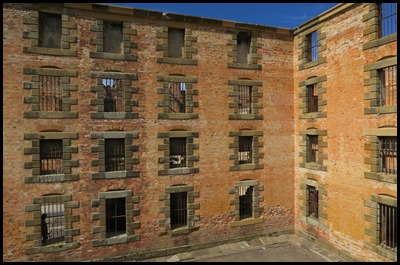 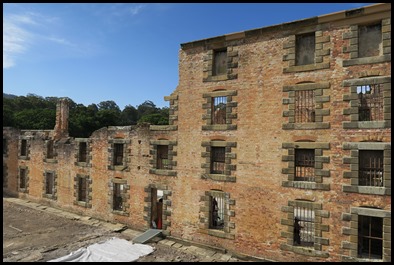 The kitchen
and bakehouse were added to the western end of the mill and the Watchmen’s
(warders’) Quarters to the eastern side. Internally the building was remodelled
to provide single cells on the ground and first floors (2.2 x 1.2 metres) built
to sleep two hundred and twenty men. The ground floor convicts wore thirteen
kilogram chains and on the floor above six kilogram ones. These convicts were
fed in their cells.
The second
floor was converted to a mess in which the top floor convicts were fed. A dumb
waiter delivered the food from the kitchen. Also on this floor was a makeshift
chapel for the Roman Catholics as well as a library which is recorded as having
thirteen thousand volumes in 1871. Literacy classes were conducted there at
night.
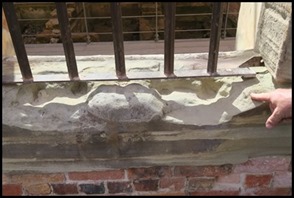 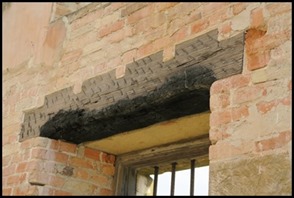 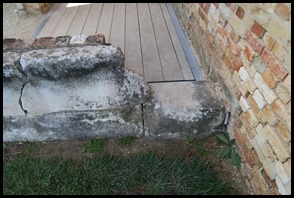
Wear and tear.
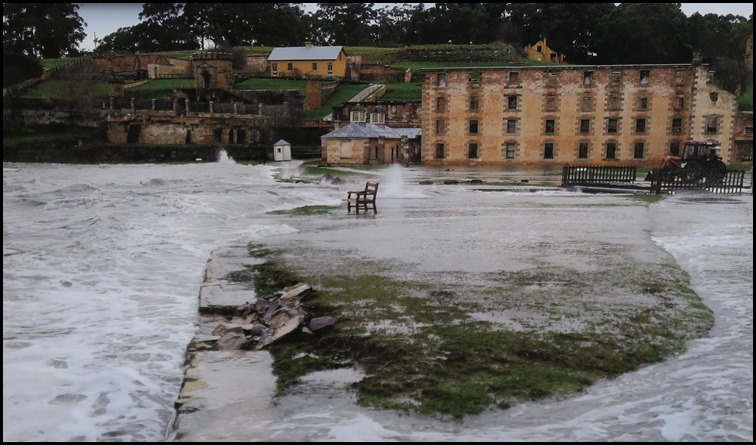 In July 2011
Port Arthur experienced an extreme weather event that
saw the usually calm waters of Mason Cove surge over the sea wall and inundate
the Penitentiary Building. The surge also lifted chairs and signs from the
foreshore and the waves then continued to push the water against the exterior of
the Penitentiary scouring the foundation stones.
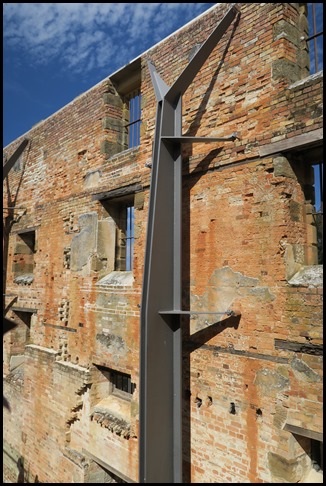 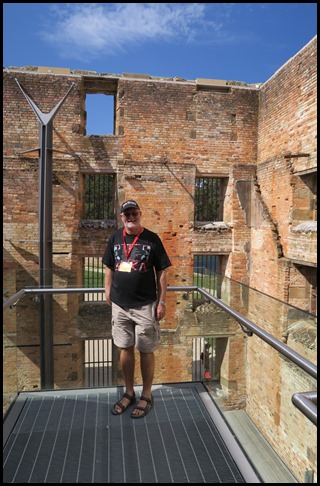 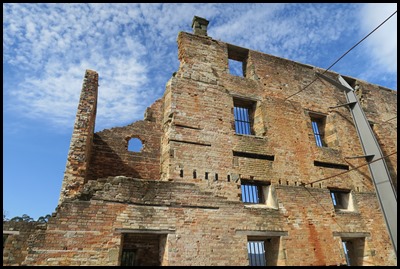  With the
evidence showing that the Penitentiary ruin was vulnerable to the environment –
including high winds, earthquakes and wave impact from the adjacent sea – an
engineered solution had to be designed to combat all of the potential threats.
The conservation works involved a series of large steel columns, levered off
reinforced concrete strip footings that run underground. The columns were fixed to the walls using steel bridges with
anchor points, just like the toes of a gecko. These are adjustable to allow the
anchor points to avoid areas of brickwork that are very
fragile.
The building was bolstered by inserting strengthening rods down through the walls, secured by a specialised grout. Combined with a steel top plate, these additions added strength to the higher walls, which are most vulnerable to collapse. Once all the support elements were in place a new walkway was constructed through the building. The route follows the original corridors allowing for visitors to walk the same paths as the prisoners and officers once took.
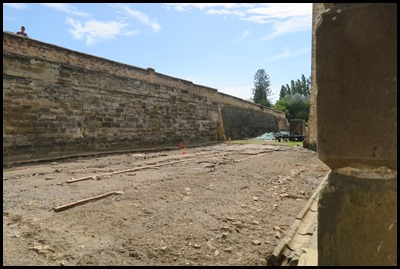 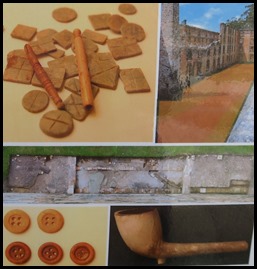 These archaeological excavations behind the building are, at
nearly five hundred square metres, the largest ever undertaken on the site. The
workers are stripping the whole area to ensure every bit and bob is collected.
Information about the lives of convicts who were housed here, artefacts will be able to tell the story. Fragments of clay
pipes have been found, used by the convicts to smoke their daily tobacco ration.
Earlier archaeological work here has shown that the area offered the convicts
some privacy, gaming tokens were found – almost certainly contraband, probably
used for gambling. Complex drainage systems needed for the ablutions buildings
were also found.
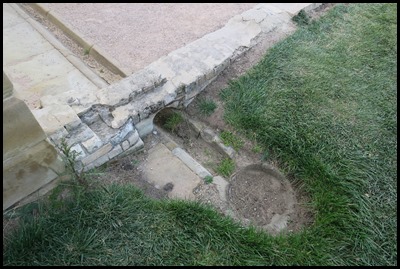 A drain
at the corner of the muster yard.

At the edge of the Penitentiary prisoners muster ground stands a rather handsome Drinking Fountain, built in the 1850’s to provide for the convicts.
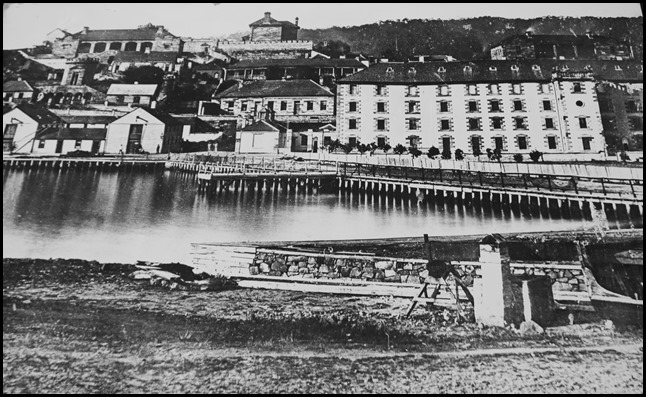
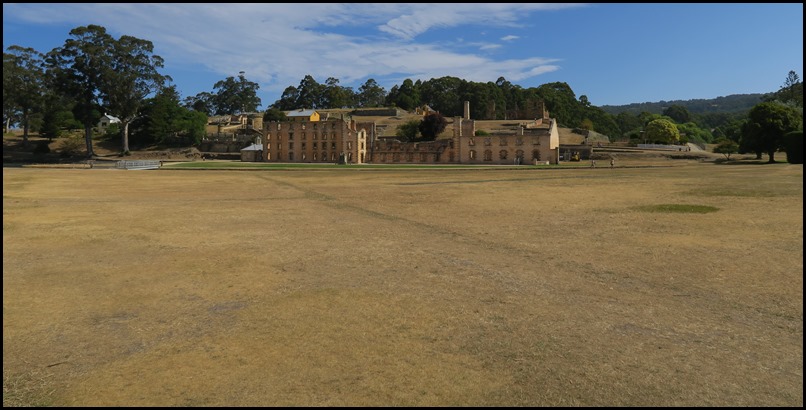
A final look back.
ALL IN ALL A HUGE, AMAZING BUILDING MASSIVE MONUMENT, WELL PRESENTED |